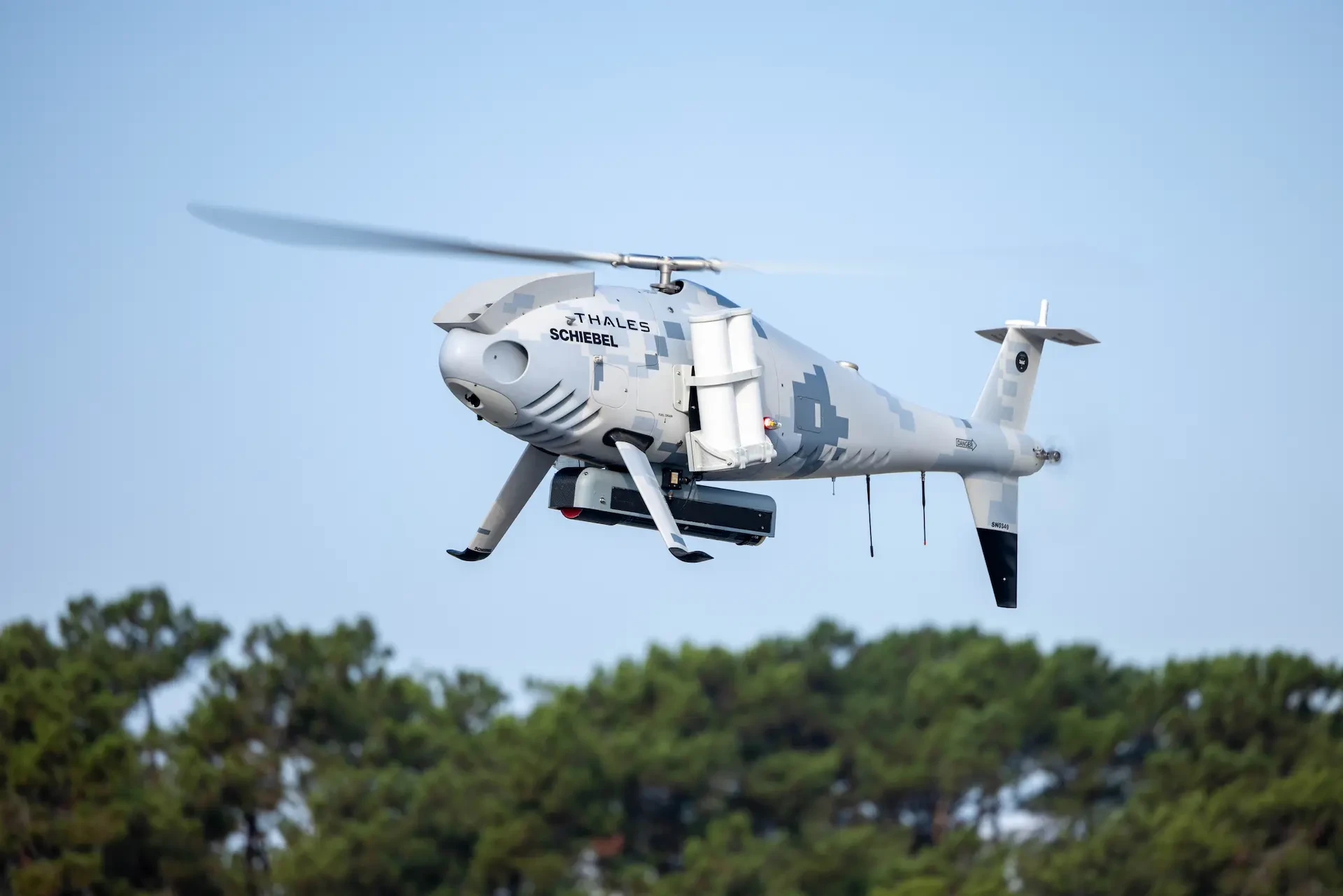Schiebel has participated in the large-scale NATO supported exercise REPMUS 2024 (Robotic Experimentation and Prototyping using Maritime Uncrewed Systems) hosted by the Portuguese Navy.
Sponsored by the UK Royal Navy and in partnership with Thales, the S-100 flew multiple missions over the three weeks of the exercise with its Intelligence, Surveillance and Reconnaissance capabilities as well as its Anti-Submarine Warfare, Mine Counter Measures and Rapid Environmental Assessment.
At last year’s REPMUS, the CAMCOPTER S-100 demonstrated its sonobuoy dispenser, successfully deploying four G-size sonobuoys from the air to form a small ASW barrier. This year, the UAS additionally dropped and deployed the more capable A-size sonobuoys alongside the four G-size sonobuoys. A second S-100, configured with the Thales BlueTracker communications payload, then relayed the sonobuoy signals back to the ground station in real time providing critical range extension.
Schiebel fitted the CAMCOPTER S-100 with the VQ-860-G and the VUX-120 LiDARs from the Austrian company Riegl, enabling the S-100 to scan the exercise waters for both drifting and moored mines. The laser scanners provide simultaneous bathymetric and topographic mapping under water, on surface and along coastlines, making the S-100 the perfect asset for detecting sea mines (for MCM) as well as for supporting amphibious operations (for REA).
“Maritime warfare utilizing UAS is becoming more and more front of mind for Navies all over the world. Using the latest technology combined with a proven unmanned asset provides an end-to-end solution for ASW that saves valuable time and significantly reduces risks,” said Hans Georg Schiebel, Chairman of the Schiebel Group. “With our 20 plus years of operational experience, especially in the harsh maritime environment flying from ships, and the exceptional technical specifications of the S-100, it is the ideal UAS to showcase the latest unmanned airborne capabilities at REPMUS.”
 HOME
HOME


